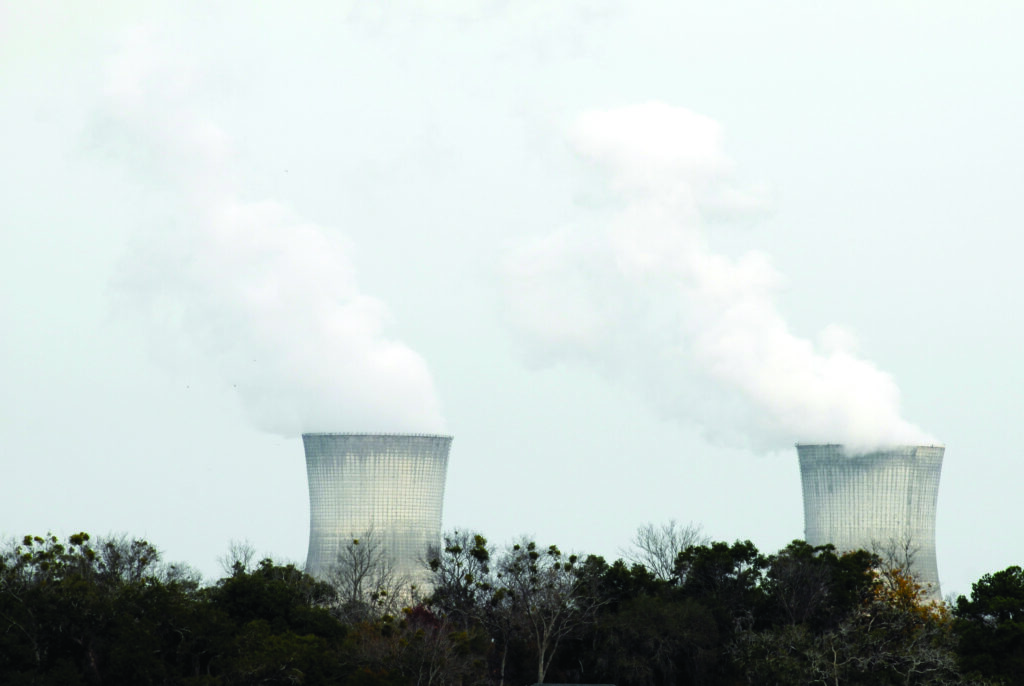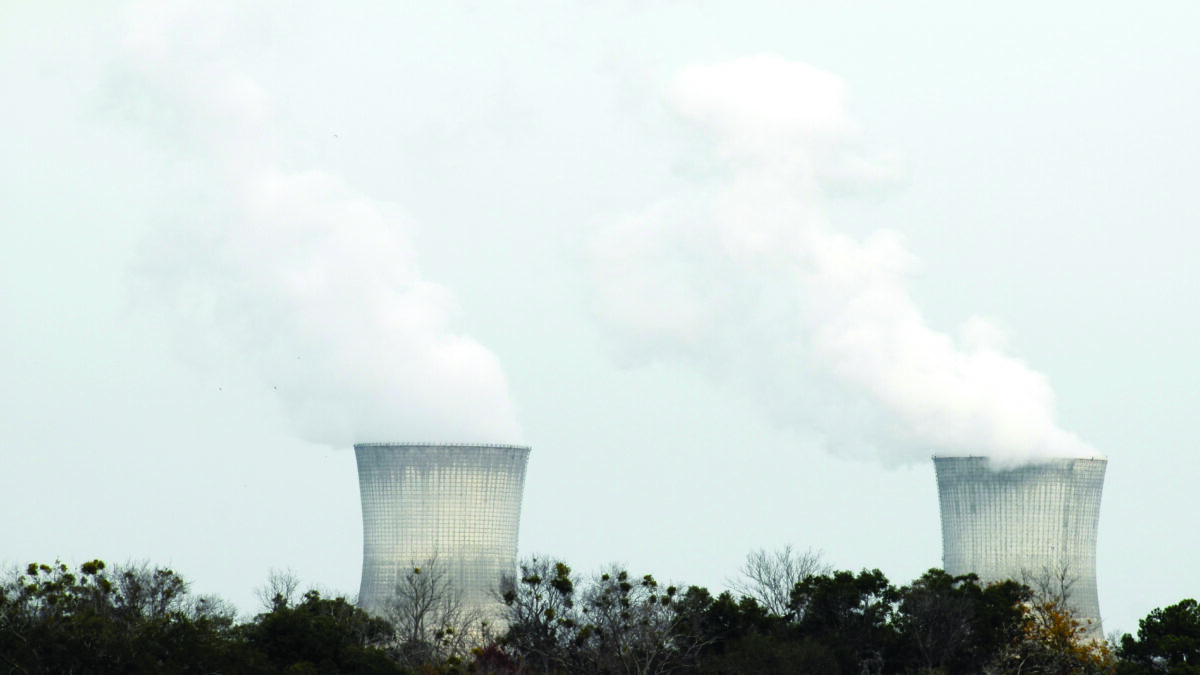Part I

On March 28, 1979, one of the two nuclear reactors in south central Pennsylvania’s Three Mile Island power plant suffered a partial meltdown, emitting low levels of radiation throughout the area, delivering the country its worst nuclear disaster and causing officials to urge the evacuation of all pregnant women within a 20-mile radius.
My mom was one of these women, just over halfway through her pregnancy with me.
Growing up with that “origin story” ingrained in me a longstanding fascination with atomic history. One that would compel me to “Forrest Gump” my way around the world through multiple sites of atomic interest, culminating with a strange literary coincidence in the little Topanga Canyon California house I share with my wife and from where I plot my next potential intersection with atomic—and perhaps world—history. This is my atomic story.
The first decade of my life was the last decade of the Cold War. Growing up in Lancaster County, Pennsylvania (“Amish Country” as it is famously known), my atomic fascination began early in my elementary school years as I became more cognizant of the “TMI” nuclear power plant up the river and its infamy that coincided with my natal development—a disaster that was still fresh in the memories of my parents and community. My fascination was indulged by watching TV programs and going to the library to check out books, newspaper clippings, and magazine articles about the event. I enjoyed showing off my nuclear knowledge during school book report assignments, illustrated with my doodles of that ominous radiation symbol and those distinctive hour-glass-shaped cooling towers. How neat it was for me in 4th grade when “The Simpsons” debuted on TV, opening with that shot of the nuclear power plant where Homer Simpson worked (and how neat it is that a show I watched as a 10-year-old continues to air new episodes into my 40’s).
And while I couldn’t have known it then in 1986, around the time I was boring my 2nd grade classmates with yet another report about TMI and absorbing the live news coverage of the unfolding Chernobyl disaster taking place far away in the Soviet Union, across my country in a place called Topanga a woman was finishing the writing of her own atomic story quite literally from the room in which I am now writing this—but more on that later.
In my second decade of life, the Cold War would end and “The Internet” as we know it would begin. My fascination with atomic history would lead me to absorbing the history of physics and The Manhattan Project, pouring over archival footage of atomic tests, and obsessively re-watching the nightmarish fictional nuclear war imagery of my favorite movie, Terminator 2 (a now ironic fun fact: on set during the 1990 shooting of the movie, they had to add “why attack Russia, aren’t they our friends now?” to a scripted line about a future war, because the collapse of the Soviet Union had just begun and Russia suddenly seemed not to be an obvious enemy of the United States). And while nearly every book I’ve ever read has been non-fiction, I discovered one of my favorite fiction books in English writer Louise Lawrence’s young adult novel, Children of the Dust, about a young British girl caring for her family in the aftermath of nuclear war and the evolution of humanity.
In middle school I finally had my chance to stand beneath the vacated (and scrubbed) cooling towers of Three Mile Island during a class field trip. I was by far the most excited kid there. After my freshman year of college in Philadelphia, I took my first trip out west, on a grand summer road trip with a friend where I made a particular point of stopping by the White Sands Missile Range, site of the first atomic detonation in 1945, the “Trinity Test”. Looking beyond a chain link fence out toward that site many miles away over a plain desert, I imagined the famous physicist and Manhattan Project leader, J. Robert Oppenheimer’s famous repurposing of the Hindu “Bhagavad Gita” scriptural verse upon seeing the first human-created atomic mushroom cloud, “now I am become death, the destroyer of worlds.” Up until that point, I had been just a boy born in the shadow of a comparatively harmless nuclear power plant disaster, curiously absorbed in books and movies about atomic stuff, but now I was young man beginning to form a connection to the sobering realities of the atomic age, tangible in the storied sand beneath my feet.
My third decade of life was my first decade of adulthood. The non-nuclear horror of 9/11 would unfold (exposing our modern society to something nearly atomic in destructive nature and terrifying dust story, though thankfully not prompting any actual atomic escalation), the international space station would be completed, and I moved out west to Los Angeles with my then girlfriend, now wife, Niki, who began a career in Hollywood visual effects (the spark of our relationship was kindled in part due to our shared love of Terminator 2).
Now that I was residing out west as a working adult, near the great southwest desert where the tales of atomic yore had consumed my curiosity and imagination as a child, one of my first “fun weekends” was to tour the Nevada Test Site: a Rhode Island-sized chunk of highly-restricted desert about an hour north of Las Vegas where over 900 atomic bombs were tested during the Cold War era.
I had to obtain a clearance from the Department of Energy weeks in advance to be approved for joining the day-long bus tour throughout the site. I was in a combined state of child-like wonder and old-man pondering for the entire day as I and a busload of mostly octogenarian military veterans visited site after site of atomic explosions, many of which I had once obsessed over archival footage of. We wore little radiation monitoring badges, were restricted from wearing sunscreen, lip balm or any other type of skin product that could promote the sticking to skin of potentially radioactive dust, and we never stayed longer than a few minutes at any given site to limit our radiation exposure. We stood at the bottom and edges of massive atomic blast craters, looked upon the wreckage of mock railroad bridges and suburban homes built to test the effects of various sized explosions at various distances away from civilian targets. Perhaps most ghostly were several skyscraper-sized towers standing tall in the middle of the vast desert, relics from would-be above ground tests that were indefinitely put on hold upon the signing of the Nuclear Test Ban Treaty in 1963. These towers were not dismantled. They were just…waiting. Perhaps just doomed to the dustbin of history or perhaps for another ominous time when they would again have utility?
The tour was led by a salty long-retired army vet who relished getting to share with his intrigued and captive audience the many tales of his carefully assembling dozens of experimental nuclear bombs for testing and then witnessing their detonation with his own eyes. At one point someone asked him whether he ever suffered medical problems due to his years of working with nuclear weapons. He jovially replied while grabbing his crotch, “welp, I still have two nuts and my prostate!”

At the end of my third decade, Niki and I took a trip to Japan, with the MacGuffin centerpiece of the trip being a deeply somber pilgrimage to the city of Hiroshima and its Peace Memorial, aka “A-Bomb Dome”: the preserved remnants of a beautiful exhibition hall which happened to be located directly below where the U.S. “Little Boy” fission bomb was aerially detonated and thus, due to the curious physics of atmospheric explosions, was one of the few structures in the city NOT totally destroyed. It is permanently kept in the ghostly, grey, blown out state in which it was left since the 1945 bombing, along with an adjacent museum about the event. This was a place I had wanted to see, wanted to touch, experience, and emotionally feel since as child I became aware of its place in the black and white ugliness of human history.
There were two moments of this experience that touched me particularly deeply, and which occupy opposite ends of an emotional spectrum: The first was an exhibit of children’s drawings from the explosion and its aftermath. Few other things can as starkly connect nuclear weapons with their place in humanity than a child’s crayon drawing depicting the flesh of a loved one’s face melting off. The second was the sounds we heard upon leaving the A-Bomb Dome complex of jubilant cheers from a baseball game taking place in a stadium several blocks away. Hiroshima…Baseball…BASEBALL!? How profound that in one moment in time two nations can be so bitterly conflicted that one be compelled to vaporize an entire city of another—and then barely 70 years later—within the span of the average human life—that city could flourish and happily embrace the national pastime of its once destroyer. Nothing is permanent, whether it be atoms or animosity.





Here’s a link to Part 2. Thanks for reading!
https://topanganewtimes.com/2022/05/20/on-golden-days-2/